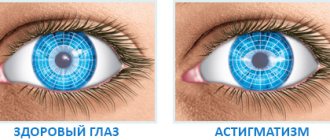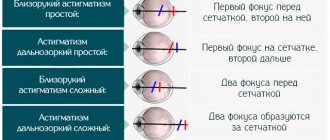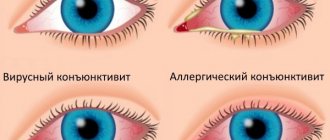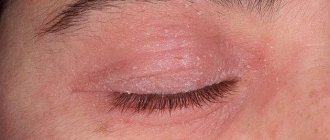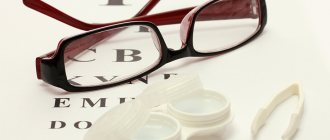Buy a venous catheter:
- Intravenous catheter with additional port | Vogt Medical, Germany (VM) from RUB 9.15
- Intravenous catheter for CHILDREN (without port) with SMALL WINGS and with INTRODUCTION DEVICE for newborns and small children | Vogt Medical Vertrieb GmbH, Germany from RUB 20.50
- Intravenous catheter with additional port | POLYFLON (Poly), SoftCathe, OneFlon, India from RUB 8.65
- Intravenous catheter with additional port | Integral, China from RUB 8.30
- Intravenous catheter with additional port and fixing wings | " BEROCAN", Germany ("Beromed" - Sale of leftovers)
- Peripheral venous catheter with protective clip and additional port with wings | POLY SAFETY, FEP material (Teflon), India
- Peripheral venous catheter with protective clip and additional port with wings | POLY SAFETY, material PUR (Polyurethane), India
An intravenous (peripheral) catheter is a medical device intended for long-term administration of drugs into peripheral veins (up to 3 days) or removal of liquids, solutions of drugs from the human circulatory system using a catheter inserted into a blood vessel (patient’s peripheral veins) with in order to reduce injury to the vein using a hollow needle (introducer). The needle is removed immediately after the catheter is inserted into the vein. Peripheral venous catheter (catheter into a vein) - inserted into the arm, neck or head. The other end of the catheter is free, through which the necessary drug is administered. Often, an intravenous catheter is used in cancer patients who need to administer drugs intravenously for a long time, for example, chemotherapy drugs, as well as nutritional solutions, blood products, and others. Venous catheters are distinguished by the material of manufacture (Teflon or PUR), which is Teflon (Teflon) - elastic with a smooth surface for standard cases with a catheterization period of 24-48 hours. Venous catheters, India (ie “OneFlon”) are made of polytetrafluoroethylene material. PUR (Polyurethane) is a softer and thermoplastic material, designed for more complex veins and longer catheterizations within 48-72 hours. The VEIN CATHETER is manufactured using modern technology for the production of catheters without the use of latex - this guarantees that there is no risk of developing allergic reactions to latex. Placement of a venous catheter into a vein using the “on a needle” method has features: the tip of the catheter has a smooth cone-shaped narrowing, and the guide needle has a special tip geometry (triangular sharpening with a reverse side cut and special grinding of the needle), a minimum distance from the end of the catheter to the bevel of the needle and a reduction The thickness of the catheter wall towards the distal end provides optimal conditions for puncture of the vessel (vein). The reverse blood flow chamber of the venous catheter provides reliable control of the positioning of the needle in the vein and allows you to quickly determine the success of venipuncture.
Special “wings” of the peripheral venous catheter allow you to securely fix the catheter on the patient’s skin, thereby significantly reducing the risk of mechanical damage to the inner wall of the vessel and the development of mechanical phlebitis. The thin-walled design of the catheter tube allows for maximum infusion rates with a minimum catheter diameter. The peripheral intravenous catheter with an additional port has an injection port for bolus administration of medications and flushing of the catheter, which makes it possible to administer medications during the infusion process.
Catheter wings allow secure fixation of the catheter and eliminate the possibility of unauthorized removal; The venous catheter case reliably protects the needle and catheter from damage. The radiopaque tubing of the venous catheter provides an additional degree of safety by allowing monitoring of the distal tip of the catheter in the event of damage. The venous catheter is internationally color coded for the size of the catheter.
Inventors
Historical
Catheters from the Roman Empire, 1st century AD.
| This section need additional quotes for verification . |
The ancient Chinese used onion stalks, the Romans, Hindus and Greeks used pipes made of wood or precious metals.[3]
The ancient Syrians created catheters from reeds. "Catheter" (from Greek καθετήρ Katetur
) originally referred to any inserted instrument, such as a fork.
It comes from the Greek verb καθίεμαι Katimai
, which means "lowered" because the catheter is "lowered" into the body.
Peripheral venous catheter Vogt Medical, Germany (VM)
The VM peripheral venous catheter is used for catheterization of peripheral veins in patients requiring long-term infusion therapy. They are designed for catheterization of peripheral veins for the purpose of long-term infusion therapy; a special catheter profile, as well as triangular sharpening of the guide needle, provide optimal conditions for puncture of the vessel. The cannula is made of thermoplastic and biocompatible material, which is ideal for long-term catheterization, and the radiopacity of the cannula material allows you to control its position. The wings provide comfortable grip during manipulation and reliable fixation of the cannula, thereby eliminating the possibility of accidental removal. Reverse blood flow chamber
allows you to quickly determine the success of venipuncture. The thin-walled design of the tube allows for maximum infusion rate with a minimum cannula diameter. Needle: special stainless steel with a high content of chromium and nickel in accordance with the AISI standard. Catheter: polyurethane/polytetrafluoroethylene. Packaging: blister/box 100 pcs. / box 1000 pcs. Quality: in accordance with ISO 10555 Sterilization: ethylene oxide Shelf life: 5 years
| Catheter size, (G), length, (inch) | Catheter outer diameter x length, mm | Color code | Flow rate, ml/min |
| 14G – 1 3/4 | 2.1 x 45 mm | orange | 270 |
| 16G – 1 3/4 | 1.8 x 45 mm | grey | 200 |
| 17G – 1 3/4 | 1.5 x 45 mm | white | 140 |
| 18G – 1 3/4 | 1.3 x 45 mm | green | 85 |
| 20G – 1 1/4 | 1.1 x 32 mm | pink | 55 |
| 22G – 1” | 0.9 x 25 mm | blue | 33 |
| 24G – 3/4 | 0.7 x 19 mm | yellow | 18 |
| 26G – 3/4 | 0.6 x 19 mm | violet | 10 |
Intravenous catheter (peripheral) with additional port of the river G17-22 price: 9.20 rub. Intravenous catheter (peripheral) with additional port of the river G14, 16 and G24 price: 11.00 rub. Intravenous catheter (peripheral) with additional port of the river G26 price: 12.70 rub. , Germany Analogs: Vasofix Braunula / Intravenous cannulas with injection port “Vasofix”
PEDIATRIC CANNULES WITH SMALL WINGS AND INSERTION DEVICE for newborns and small children
Needle (Stainless steel)- Cannula (Fluoroethylenepropylene/polyurethane)
- Cannula holder (Polyoxymethylene)
- Wing body (Polypropylene)
- Needle hub (Polypropylene)
- Needle gripper (Polypropylene)
- Luer Lock Cover (High Density Polyethylene)
- Needle cover (Polypropylene)
- Device for inserting a catheter into a vein (Polypropylene).
Intended use: Catheterization of peripheral veins in newborns and small children is an effective method of providing reliable access to the venous system for catheterization of thin and fragile vessels and is recommended for use in neonatology, pediatrics and geriatrics, Removable false port system (device for inserting a catheter into a vein) makes it possible to use the usual gripping technique when inserting a catheter. After installing the catheter, flexible wings are released, facilitating reliable fixation even on the arm of a newborn. The use of peripheral venous cannulas (IV cannulas) in neonatology and pediatrics significantly reduces the number of complications and improves the quality of treatment, ensures motor activity and comfort for the child and minimizes the psychological burden on relatives. Main advantages: The pediatric venous catheter (IV cannula) has a special convenient design for use in neonatology and pediatrics:
•Available in sizes (24 - 26 G) •Best needle tip geometry with Buck Cut cut (special sharpening) •Cannulas with built-in 4 radiopaque strips •Made from PU (polyurethane) or FEP (fluoroethylenepropylene) •PU cannulas have “ “memory effect” •Thromboresistant catheter •High biocompatibility •Latex-free
| Catalog no. | X-ray contrast stripes | Size | Length in mm | Wings | Flow rate | Code color | Quantity per pack |
| IV PEDIATRIC CANNULES WITH SMALL WINGS AND INTRODUCTION DEVICE | |||||||
| 1311702H | 4 | 24G | 19 | small | 18 ml/min | yellow | 100/1000 |
| 1311703H | 4 | 26G | 19 | small | 10 ml/min | violet | 100/1000 |
Quality and safety: Standard: ISO 10555-1.5 Sterilization: Ethylene Oxide Shelf life: 5 years. Packaging: Blister packaging / 100 pcs per pack. 1000 pcs. in cor. , Germany Price: 20.00 rub. Analogues: " BD Neoflon", B.Braun "Vasofix"
Recommendations
- Digger, Robert (2012). Catheters: types, uses and possible complications (medical devices and equipment).
. Nova Science. ISBN 978-1621006305. - "MedlinePlus: Urinary Catheters." US National Library of Medicine. November 6, 2021.
- "MedTech Memoir: Catheters." Advantage Business Media. June 16, 2015. Archived from the original dated October 24, 2021.
- "Didush Site - Milestones - Relief in the Tube: Catheters Remain a Reliable Treatment for Urinary Tract Diseases." www.urologichistory.museum
. Archived from the original January 17, 2015 - "Benjamin Franklin: The Quest for a Better World." Minnesota Historical Society. Archived from the original on August 12, 2011.
- Hirschmann, J.W. (December 2005). "Benjamin Franklin and Medicine". Annals of Internal Medicine
.
143
(11):830–4. Doi:10.7326/0003-4819-143-11-200512060-00012. PMID 16330795. S2CID 32882591. Archived from the original (PDF) on December 17, 2019. Retrieved January 2, 2013. - Huth, E.J. (2007). "Benjamin Franklin's Place in the History of Medicine" (PDF). Journal of the Royal College of Physicians of Edinburgh
.
37
(4): 373–8. PMID 18447203. - Baim, Donald (2005). Cardiac catheterization, angiography and Grossman intervention
. Lippincott Williams and Wilkins. ISBN 978-0781755672. - McKenzie, J.M.; Flahiff, C. M.; Nelson, K. L. (October 1, 1993). “Retention and strength of silicone rubber catheters. Report of five cases of retention and analysis of catheter strength." J Bone Joint Surg Am
.
75
(10):1505–1507. Doi:10.2106/00004623-199310000-00011. ISSN 0021-9355. PMID 8408139. Archived from the original on September 23, 2016. Retrieved May 12, 2021. - Agarwal, Shalin; Gandhi, Mamatha; Kashyap, Randeep; Liebman, Scott (1 March 2011). "Spontaneous rupture of a silicone peritoneal dialysis catheter, indicating outflow obstruction and peritonitis." International peritoneal dialysis
.
31
(2):204–206. doi:10.3747/pdi.2010.00123 (inactive October 25, 2020). ISSN 0896-8608. PMID 21427251. Archived from the original May 8, 2021 CS1 maint: DOI inactive as of October 2021 (link) - Mirza, Bilal; Salim, Muhammad; Sheikh, Afzal (14 August 2010). "Broken piece of silicone suction catheter in the upper gastrointestinal tract of a newborn." APSP Case Report Journal
.
1
(1): 8. ISSN 2218-8185. PMC 3417984. PMID 22953251. - https://www.merit.com/PDFs/IMPRESS400741001-B.pdf Archived September 12, 2008 Wayback Machine
- (American Heart Association)
- (National Kidney Foundation)
- Laura Bailey (July 1, 2021). "Catheters: a large source of infection, but often overlooked." University of Michigan. Retrieved February 16, 2021.
- “Nobody wants to talk about catheters. Our silence may be fatal | Mosaic". mosaicscience.com. November 7, 2018. Retrieved November 13, 2021.
- Millward, Stephen F. (September 2000). "Percutaneous nephrostomy: a practical approach." Journal of Vascular and Interventional Radiology
.
11
(8):955–964. Doi:10.1016/S1051-0443(07)61322-0. PMID 10997456.
Intravenous catheter with additional port “Polyflon”, “OneFlon” or “SoftCathe”
Intravenous catheters are intended for catheterization of peripheral veins for the purpose of long-term or short-term infusion-transfusion therapy. Material: polypropylene, medical steel, Teflon, polyacetal, high-density polyethylene, low-density polyethylene, silicone.
Intravenous catheter Polyflon or SoftCathe transparent intravenous catheter made of Teflon, central hole with atraumatic edges; four x-ray positive strips along the entire length of the catheter; pavilion with a luer-lock port for connecting an infusion line or syringe; bending wings. An additional port for instant injections with a non-return petal valve is located at the top of the catheter; Equipped with a standard Luer-lock connector.
Unified color coding of the catheter size “SoftCathe”
| Catheter size, (G) | Catheter outer diameter, mm (OD) | Int. catheter diameter, mm (ID) | Color code | Length, mm | Flow rate, ml/min |
| 14G | 2,0 | 1,7 | orange | 45 | 305 |
| 16G | 1,7 | 1,3 | grey | 45 | 200 |
| 17G | 1,5 | 1,1 | white | 45 | 142 |
| 18G | 1,3 | 0,9 | green | 45 | 95 |
| 20G | 1,1 | 0,8 | pink | 32 | 65 |
| 22G | 0,9 | 0,6 | blue | 25 | 36 |
| 24G | 0,7 | 0,5 | yellow | 19 | 23 |
Stiletto needle with a triangular oblique cut; transparent needle pavilion with a Luer-lock connector, equipped with two grooves for fixing the stylet with the catheter pavilion, finger rest; removable translucent plug on the Luer-lock connector.
An additional luer-lock plug made of opaque white plastic with a faceted outer surface is fixed on the needle pavilion plug. The catheter is closed with a protective transparent cap. Sterilization: individual blister packaging. Sterilization using ethylene oxide. Shelf life: 5 years.
, India (i.e. “SoftCathe” or “OneFlon”) “La-med Healthcare Pvt. Ltd" , India (TM "La-med IV cannula") "SURU International PVT.LTD" , India (TM "SURUFLON") "Poly Medicure Limited" , India (TM "POLYFLON FEP" ") "Interpharma" , India (t.m. "EUROFLON")
Intravenous catheter (peripheral) with additional port of the river G16-22, price: 8.65 rub. Intravenous catheter (peripheral) with additional port of the river G 24, price: 9.95 rub. Intravenous catheter (peripheral) with additional port of the river G14 and G26, price: 11.15 rub.
Intravenous catheter with additional INTEGRAL port
An intravenous catheter with an additional port is intended for long-term (up to 3 days) administration of drugs without additional puncture into the patient’s peripheral veins. Made of fluorinated ethylene propylene (fluoropolymer) with Teflon coating, it is elastic, optimal rigidity prevents the formation of creases, transparent, non-toxic, has a high degree of biocompatibility, has pyrogen-free, non-toxic, and since it comes into direct contact with blood - biocompatible and hypoallergenic properties.
The sharp and elastic needle is made of high-quality durable medical steel and is resistant to various chemicals. Slippery surface due to the low surface tension of the polymer, optimal rigidity prevents the formation of creases.
Advantages:
- the possibility of without a needle bolus (intermittent) administration of drugs without interrupting the intravenous infusion.
- transparent chamber allows you to verify the success of venipuncture
- low coefficient of friction reduces pain during catheter insertion
- the catheter fits tightly around the needle and minimally injures tissue when inserted into a vein
- the minimum distance from the end of the catheter to the needle cut and a decrease in the thickness of the catheter wall towards the distal end facilitates vein puncture
- the presence of radiopaque stripes provides effective control over their location in the vein.
- The presence of wings allows not only to securely fix the catheter to the skin, but also reduces the risk of bacterial contamination, since they do not allow direct contact between the back of the catheter plug and the skin.
- The injection port cover opens and closes effortlessly.
- the plug has an internal thread, which ensures a tight fit of the plug to the catheter and completely eliminates contact with the patient’s blood
- The color coding corresponds to the catheter size designation.
- sterile
- intended for single use
- shelf life – 5 years
Intravenous catheter with additional port INTEGRAL dimensions
| Catheter size, (G) | Catheter outer diameter, mm (OD) | Color code | Length, mm | Flow rate, ml/min |
| 14G | 2,1 | orange | 45 | 270 |
| 16G | 1,7 | grey | 45 | 180 |
| 17G | 1,4 | white | 45 | 125 |
| 18G | 1,3 | green | 45 | 80 |
| 20G | 1,1 | pink | 33 | 54 |
| 22G | 0,9 | blue | 25 | 33 |
| 24G | 0,7 | yellow | 19 | 20 |
| 26G | 0,6 | violet | 19 | 13 |
, China (tm. "INTEGRAL")
Intravenous catheter (peripheral) with additional port of the river G 16-24, price: 8.00 rub. (remains) Intravenous catheter (peripheral) with additional. port of the river G 14 and 26 price: 10.00 rub. (leftovers)
INTRAVENOUS CATHETERS “Beromed” FOR PERIPHERAL VEINS with an additional port and fixing wings (remains)
Intravenous catheters “BEROMED” for peripheral veins with an additional port and fixing wings are used for long-term intravenous infusions. Specifications:
- The puncture needle is made of high-quality, thinnest surgical steel, which allows it to maintain strength with minimal wall thickness
- triple sharpening of the needle ensures atraumatic insertion
- the elastic surface of the catheter allows painless insertion of the catheter into the vein
- two built-in radiopaque strips
- integrated injection port "Luer" / "Luer-Lock" type "male" with non-return valve
- fixing wings allow you to securely secure the catheter
- color coding of the additional port plug allows you to visually determine the size of the catheter
- hydrophobic catheter plug prevents blood leakage, removable plug for quick closure of the catheter
- catheter material FEP (fluoroethylpropylene), sizes G 14, 16, 17, 18, 20, 22, 24, 26
- the entire product is made of materials with a high degree of biotolerance, sterile, pyrogen-free, non-toxic
- Individual packaging, easy to open, contains all the necessary information about the product.
Intravenous catheter with additional port Beromed dimensions
| Catheter size, (G), length, (inch) | Catheter outer diameter x length, mm | Color code | Flow rate, ml/min FEP | Flow rate, ml/min PUR |
| 14G – 1 3/4 | 2.1 x 45 mm | orange | 305 | 305 |
| 16G – 1 3/4 | 1.7 x 45 mm | grey | 200 | 200 |
| 17G – 1 3/4 | 1.5 x 45 mm | white | 142 | 142 |
| 18G – 1 3/4 | 1.3 x 45 mm | green | 95 | 95 |
| 20G – 1 1/4 | 1.1 x 32 mm | pink | 60 | 60 |
| 22G – 1” | 0.9 x 25 mm | blue | 36 | 36 |
| 24G – 3/4 | 0.7 x 19 mm | yellow | 23 | 23 |
| 26G – 3/4 | 0.62 x 19 mm | violet | 17 | 17 |
, Germany (t.m. “BEROCAN”) Venous catheter with additional port + wings, river. G 16-24, price: 12.00 rub. Venous catheter with additional port + wings, r. G 14-26, price: 14.00 rub.
Peripheral venous catheter with a protective clip and an additional port with POLY SAFETY wings, FEP material (Teflon)
The peripheral intravenous catheter, equipped with a self-locking device (Safety type) is a disposable sterile peripheral intravenous catheter on a sterile stainless steel needle, intended for puncture and catheterization of peripheral veins, equipped with a device for blocking the needle tip in the form of a bullet-shaped clip that is self-installed during reverse traction (when removed needles from the catheter).
disposable venous catheter - has a device (hydrophobic plug) that blocks the needle tip with a plastic clip during the completion of the traction movement when removing the needle from
catheter installed in a vein. This prevents attempts to reuse the catheter, as well as to advance the needle into the catheter if installation is unsuccessful (the possibility of cutting off the catheter with the needle tip when attempting to advance again is eliminated). Specifications:
Safety catheter composition: Manufacturing materials: FEP (Teflon) or PUR (Polyurethane) , the catheter has 4 (FEP) and 6 (PUR) fully built-in radiopaque strips, an additional infusion port with a tight, quick-release, harness-fixed, sealed cap, wings , Luer-Lock plug, puncture needle is made of stainless steel with an additional Luer-Lock plug made of opaque white plastic with a faceted outer surface, fixed on the needle pavilion plug. International color coding for catheter cap. Does not contain Latex (LATEX FREE) Safety FEP (G) catheter sizes: 14, 16, 18, 20, 22, 24, 26, 27 Packaging: Individual, sterile, Tyvek blister, multiples of 100 pcs. Sterilization: ethylene oxide. Shelf life: 5 years. Brand and , India
Price:
Intravenous catheter with protective device “POLYSAFETY” material FEP (Teflon) p. G 16-22, price: 45.00 rub. Intravenous catheter with protective device “POLYSAFETY” material FEP (Teflon) p. G 24, price: 47.00 rub. Intravenous catheter with protective device “POLYSAFETY” material FEP (Teflon) p. G 26, price: 50.00 rub.
Problems
“Even routine patient care, such as the use of a catheter, can cause serious problems for patients if communication between health care providers breaks down.[15] [Catheters are hidden under blankets so doctors don't automatically know who is using them] Any foreign object in the body carries a risk of infection, and a catheter can serve as a superhighway for bacteria to enter the bloodstream or body." Milisa Manojlovic, Professor, University of Michigan School of Nursing and Institute for Health Policy and Innovation
Catheters are difficult to clean and are therefore resistant to antibiotics.[16] or otherwise pathogenic bacteria.



